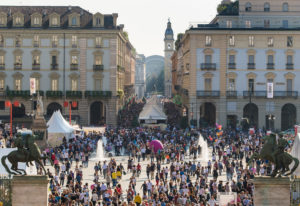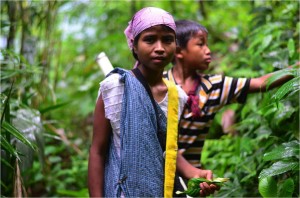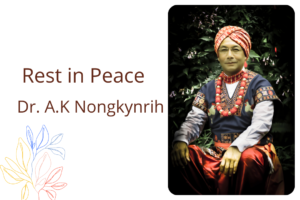
Let winter be your excuse to experience one of the country’s finest cultural offerings that you won’t witness during any other season. And with so much to offer, there’s no other place we’d rather start from than the northeast. So, here’s our list of five don’t-miss festivals from the region that you should experience if you haven’t already.
Hornbill Festival
The Hornbill Festival held in Kisama heritage village in Nagaland has become quite the crowd-puller over the years. During this festival, the village plays host to a series of daily events that include – art and craft exhibitions; a Naga wrestling competition; the skin-scorching, eye-watering Naga chilli-eating contest; a cooking competition that crowns the Hornbill chef of the year; and a greased bamboo pole climbing event, a traditional sport where participants try to climb a 10ft bamboo pole greased with pork fat. Recent additions include a night bazaar, motor and cycle rallies, literature and film fests, and the Miss Nagaland contest. And that’s not all. The festival is also one big food carnival offering some lip-smacking Naga cuisine including – bowls of dry pork with axone (fermented soybeans), yam boiled with mustard leaves, samutu (meat chutney), and zothu or thuthse (indigenous beer served in bamboo mugs and buffalo horns). Add to this the Fat Mania contest where participants get to compete with each other while downing pork fat. This year, the festival will run from 1 December to 7 December.
Sangai Festival
This festival has been around for many years, and is an annual affair organised by the Manipur Tourism Department. This year, it’ll take place between 21 November and 30 November. It was dubbed the Sangai festival back in 2010 to highlight the state animal – the endangered brow-antlered deer (also known as the dancing deer of Manipur). The festival is a definite must for anyone looking to enjoy the best of Manipur’s art and culture, music, dance, and local food. Did we mention the gorgeous textiles and crafts available at great prices?

Loinloom Festival
This unique event taking place in Diezephe, Nagaland celebrates the dying art of loinloom weaving. Loinloom, one of the oldest devices for weaving textiles, is a backstrap loom found in parts of Northeast India, China, Bhutan, and Myanmar. It produces narrow strips of cloth with not more than 18 inches of finished width. To achieve a bigger width, different strips are stitched together. There’s a whole variety of stoles, shawls, and tops in more than 200 designs to shop from here. You can even pick up the rudiments of cotton spinning, weaving and natural dyeing at workshops. Textile traditions aside, the festival is easily a smorgasbord of food, music, art and culture. Here, it’s easy to run in to an eclectic mix of people – bikers, singers, yoga instructors, chefs, folk artists, textile designers, tattoo artists – from all over the world. There is lots to keep you busy, too – you can get inked by Mo Naga, a popular tattoo artist at the festival or dig in to Belgian pastry chef Charles Scarceriaux’s delectable pastry creations, who’s known for giving the local food an interesting Belgian-French twist. The festival is scheduled to take place between 9 December and 11 December.
Chumpha Festival
This harvest festival – celebrated by Tanghkul Nagas in Ukhrul, Manipur – is based on an old Tangkhul custom wherein the daughter-in-law seeks permission from her mother-in-law to enter the family granary. This seven-day festival usually takes places between November and December, with the last three days witnessing processions, dances and music performances. Traditionally, this was an all-women affair and men had to spend the night outside, albeit with a generous supply of food and drinks. Interestingly, eating new rice before performing the ritual is taboo.

Mei Ram-ew
Mei Ram-ew (or Terra Madre, meaning mother earth) held in Meghalaya in December, gets its inspiration from the Slow Food movement and is modelled on the lines of the global Terra Madre festivals. Here, forest-foraged and locally grown foods are displayed, cooked and served by indigenous communities of the northeast. Workshops and demonstrations include tasting workshops of indigenous food varieties, cooking demos, and talks on culinary aspects of foods like millets. The first fest was held in 2010, with each progressive year showcasing different things like – the unique traditional cuisines of Meghalaya’s tribes in 2010; over 200 edible plant species and their recipes in 2012; and last year’s quirky sounding Disco Soup, a delicious concoction made by chefs and volunteers who chopped, danced, and cooked to music. The idea was built on a concept originating in Europe where young people collected and cooked discarded vegetables and fruits from supermarkets, thereby, urging people to stop wastage of food. Dates for the festival are yet to be decided.
AUTHOR’S BIO: Anuradha Sengupta is a freelance writer and founder-editor of Jalebi Ink, an award-winning media collective for children and youth. A compulsive city-walker, she loves exploring urban cultures and is a columnist for NY-based Karta, a collaborative urban mapping project. Her most memorable adventure was in Afghanistan as digital media advisor, setting up citizens’ media centres.
Story source: http://www.lonelyplanet.in/articles/6613/5-must-see-festivals-from-the-northeast



